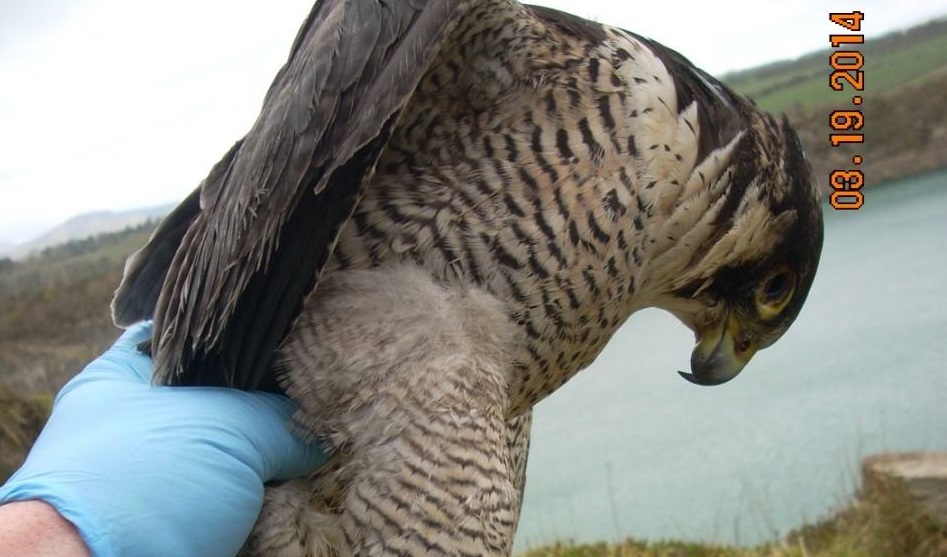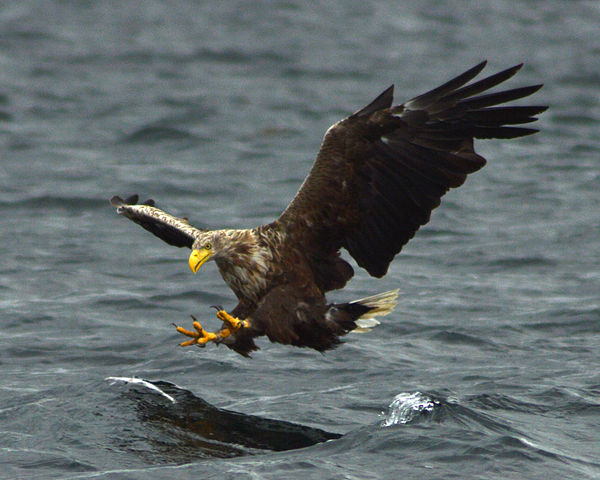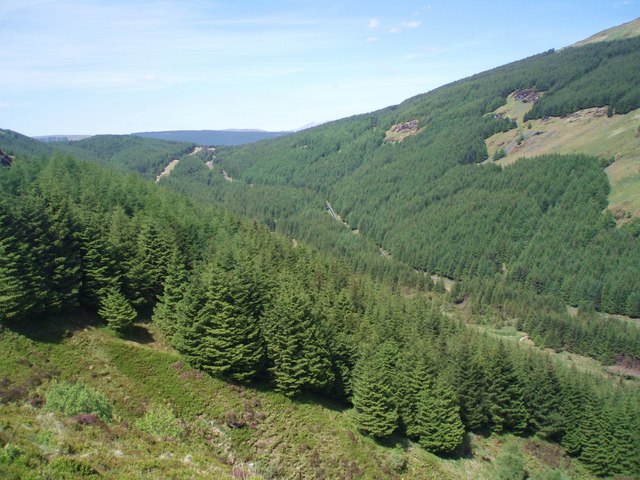The Wild Nephin wilderness: the story so far and fears for the future

December 14th, 2017
It was announced earlier this month that the Wild Nephin wilderness area in Co Mayo is set to be incorporated into Ballycroy National Park.
The swallowing up of 4,600 hectares of Coillte-owned land currently included in the Wild Nephin will expand the National Parks and Wildlife Service-owned Ballycroy to 15,000 hectares.
The park’s expansion should help conservation efforts to protect habitats and important species in the Nephin area, such as pine marten, crossbills, and long-eared owl. The decision will also benefit tourism in the park which attracts 40,000 people per year.
Announcing the decision, Minister for Rural and Community Development, Michael Ring, TD said that the consolidation of the wilderness zone into Ballycroy will give the public “another accessible area of un-mirrored and unrivaled beauty”.
However, it is still unclear how this decision will impact upon the Wild Nephin wilderness project itself, the first of its kind in Ireland.
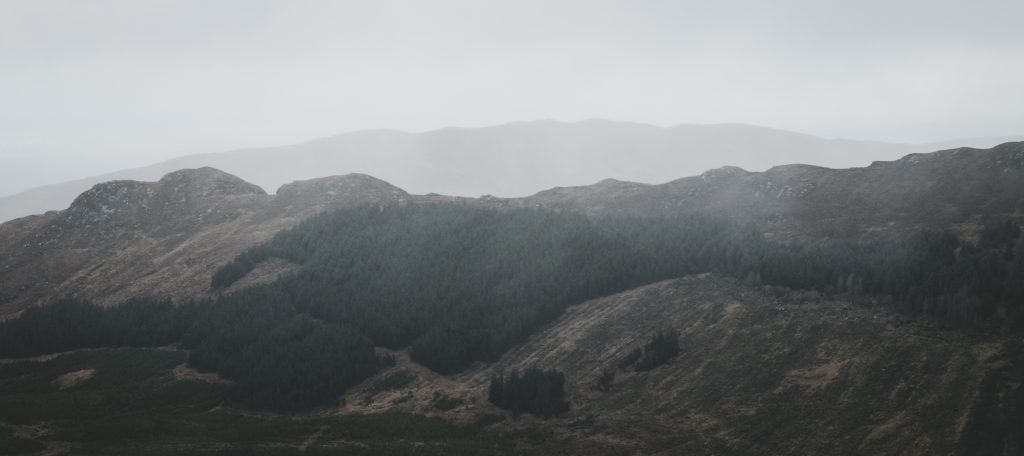
Conifer Plantation in Wild Nephin area, 2 December 2017 Photo: James Orr
Ireland’s first wilderness project
Sitting in the Nephin Beg mountain range just north of Newport, the 11,000-hectare Wild Nephin zone is made up of land from Ballycroy National Park and 4,600 hectares of Coillte-owned conifer plantations.
Coillte runs the wilderness project together with the NPWS after the two bodies signed a memorandum of understanding (MoU) in March 2013 to establish Ireland’s first official wilderness zone.
Under the MoU, the semi-state forestry company, which owns 7 per cent of the land cover of Ireland, agreed to phase out its commercial sitka spruce and lodgepole pine plantations in the area.
The idea was first conceived by the Coillte’s former head of Recreation, Environment and Public Goods, Bill Murphy. The wilderness advocate told The Green News that he wanted to see the area converted into “a large wild landscape” free from human management within 50 years.
“The area would not be developed to provide facilities for tourists as in a national park or forest park but would provide opportunities for people to enjoy nature and wildness in all its beauty and hardships,” Mr Murphy added.

Wild Nephin wilderness area, 2 December 2017 Photo: James Orr
Initial Success
After its announcement, the project immediately received international acclaim and media coverage, with then-Taoiseach, and Mayo native, Enda Kenny visiting the area together with NPWS and Coillte representatives.
An initial period of ecological restoration was carried out in a bid to allow nature to reclaim the land, including the thinning of plantations, blocking of drains on sections of bog and planting of some native trees.
In addition, pre-existing hiking trails were refurbished and lean-to shelters were constructed to facilitate primitive recreation.
In 2013, Dr Craig Bullock of UCD’s School of Geography, Planning and Environmental Policy conducted a report for Coillte on the economic potential of the project.
Based on a predicted boost in tourism and the delivery of ecosystem services, Dr Bullock estimated that the welfare and tourism value of the wilderness project could exceed €3 million per year.
He cautioned, however, that this success would rely heavily on the “restoration and planned evolution of the natural environment”.
Five years on, however, new Coillte data released to The Green News reveals that little progress has been made in returning the forest landscape to its more natural form.
Commercial forestry continues
Information obtained by The Green News through an Access to Information on the Environment (AIE) request reveals that just over 260,000 conifer trees have been planted in the Wild Nephin area since 2014. An equivalent amount has also been harvested during this period, according to Coillte.
Almost 90 per cent of the conifers planted since 2014 in the rewilding zone were non-native lodgepole pines. Sitka spruce plantings make up the remaining 12 per cent.
Although the number of conifers planted and harvested dropped following the initial launch of the project from 150,000 in 2013 to 18,000 in 2014, Coillte has turned-over an annual average of 81,000 conifers in the past three years.
The data released by Coillte shows that just 25,000 native trees have been planted since 2014 with birch, rowan, and alder the most abundant. Oak and beech have been planted in smaller numbers.
Responding to the figures, experienced Mayo hillwalking guide Barry Murphy said that the project was clearly a publicity stunt. “Coillte are really only doing all of this as a token gesture,” he said.
Mr Murphy, a vocal critic of the implementation of the rewilding scheme, said that the planting of some native trees on a “tiny area within the site” is anything but a “genuine rewilding” project.
In a statement, Coillte said that the removal of forestry focused on “opening vistas onto the mountainous terrain and lakes” as well as improving boundaries between forest and adjacent open land and preparing areas for bog and riparian zone restoration.
“Forest regeneration, supported by tree planting, also aimed to encourage natural regeneration and harvesting activities which took place fitted within the overall objectives of improving landscape and habitat quality” the statement continues.
According to Coillte, the NPWS will now manage the transfer of land into the expanded Ballycroy National Park and put in place a “public amenity conversion plan”.
“Any forest operations that Coillte undertakes as part of the conversion plan will occur in full consultation with the National Parks and Wildlife Service” the semi-state added.
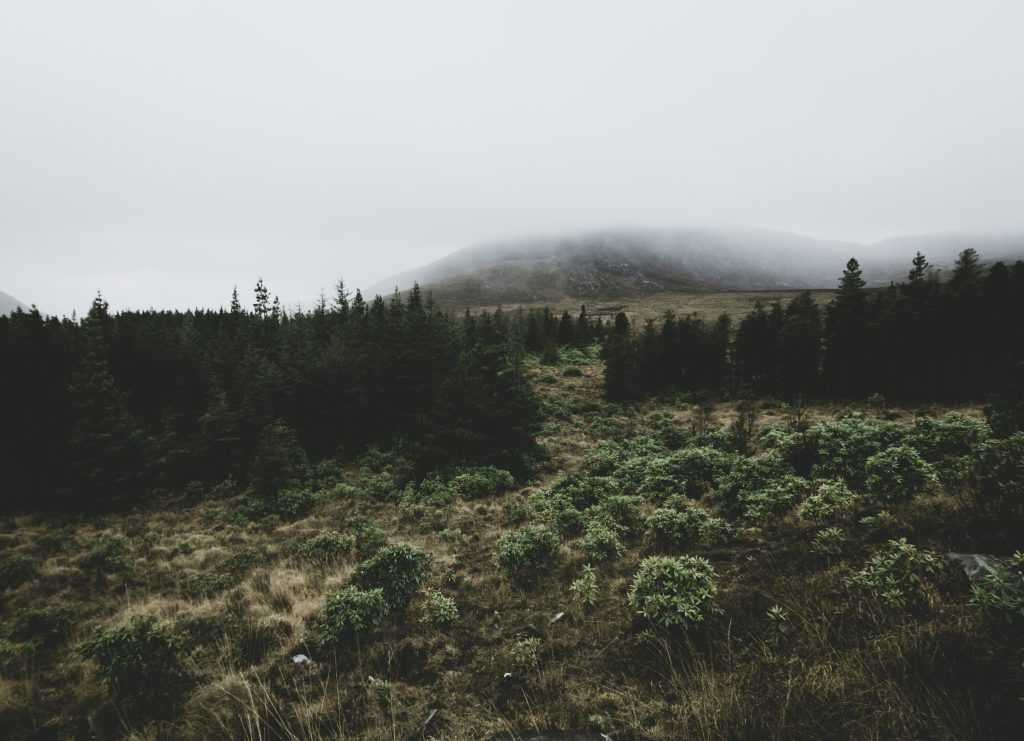
Rhododendron in Wild Nephin Area, 2 December 2017 Photo: James Orr
Rampant Rhododendron
Minutes from meetings of the Wild Nephin Management Group – made up of representatives from Coillte and NPWS –released under AIE regulations also reveals that rhododendron has been a major problem in recent years.
At a meeting in July 2015, the Management Group warned that “rhododendron spread is a major issue from a national point of view”. Rhododendron has caused a serious amount of economic and environmental damage since it was introduced to Ireland about 250 years ago.
Vast monocultures of the invasive species spread quickly and are catastrophic for biodiversity. In Killarney National Park hundreds of thousands of euro are spent every year in an attempt to eradicate the plant.
The minutes of a Management Group meeting from February 2016 states that it would cost an estimated €8 million to control Rhododendron in the Nephin zone. In comparison, the total NPWS budget for 2017 is €11 million.
The Management Group concluded at the same meeting that the likelihood of ever receiving appropriate funding to tackle the invasive species in the area was “practically zero”.
NPWS’s senior divisional manager, Denis Strong, told The Green News that rhododendron remains a “major challenge” for both the Wild Nephin area and Ballycroy National Park. He added that control of the plant will be needed “indefinitely”.
Mr Strong is adamant, however, that the rewilding project will continue with a focus on “biodiversity enhancement.” After a 15-year “conversion process” of turning the land into a biodiversity-rich wilderness there will be “light management but certainly not no management” he said.

Conifer Plantation in Wild Nephin area, 2 December 2017 Photo: James Orr
The end of wilderness?
This worries Bill Murphy, the original director of the project. He is “concerned” that NPWS will cease to manage Wild Nephin as a wilderness zone once it is fully incorporated into Ballycroy.
Mr Murphy said that NPWS “have shown in other national parks a tendency to over-manage and wilderness is by definition a non-intervention management option”.
“The press release around the recent announcement of the transfer didn’t refer to wilderness but did, worryingly, refer to connecting the Greenway and other very organised tourist projects,” he added.
Quoting Howard Zahniser, the author of the 1964 Wilderness Act in the US, Mr Murphy said that wilderness managers need to be “guardians not gardeners.” Denis Strong, however, believes that managing the area is “not as simple as that”.
“We can’t just walk away from Wild Nephin and let Mother Nature take over,” he warned. “Invasive species will always need to be controlled and one fire could wipe this place out.”
With the long-awaited Wild Nephin Conversion Plan due out in February 2018, the public can expect to receive some further insight into how the NPWS plan to manage their new land and what awaits Ireland first and only rewilding project.
[x_author title=”About the Author”]

